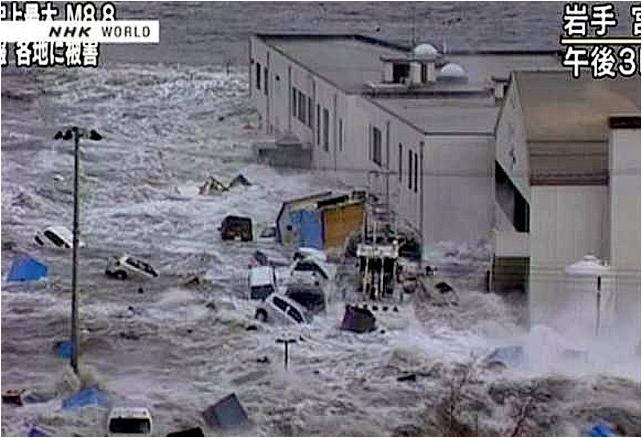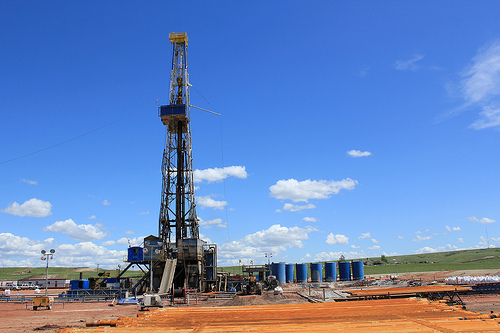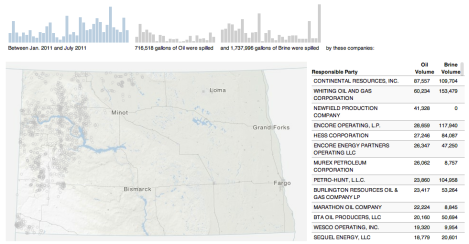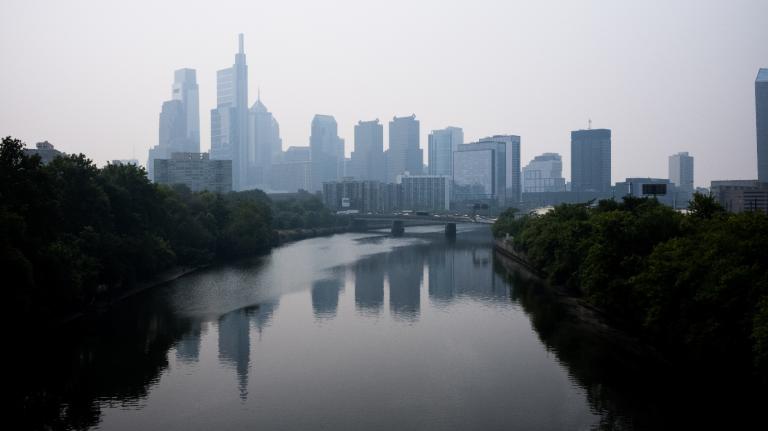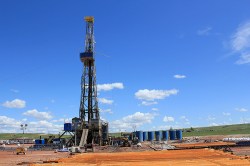
Photo by Lindsey Gee.
The fossil fuels boom has brought jobs to North Dakota. And several other things!
Like much higher rents.
[School superintendent Kelly] Koppinger said every new teacher he’s tried to recruit asks about housing. Most can’t afford it. There’s a new apartment building across from the high school, but it’s too expensive.
“Right now for a two-bedroom, one-bath you’re looking at $1,800-a-month rent,” he said. “A teacher’s take home pay is right around that $2,000 mark and for them to spend $1,800 a month on just rent, we couldn’t recruit or retain some of the staff we did have, so we needed to get it to where housing was somewhat affordable.”
To remedy that, the school district is building several apartment units and will charge $500 a month for rent.
And crime.
Within the last few months, a Watford City pharmacy was robbed of $16,000 in narcotics, four people were stabbed at a local strip club in Williston, a semi truck crashed into an RV full of people sleeping and the first prostitution ring in decades was busted.
Last year, the number of criminal incidents reported to the Williston Police Department nearly tripled to 16,495. But that’s only a fraction of the lawlessness the police have seen this year.
And, this, just released today:
According to data obtained by ProPublica, oil companies in North Dakota reported more than 1,000 accidental releases of oil, drilling wastewater or other fluids in 2011, about as many as in the previous two years combined. Many more illicit releases went unreported, state regulators acknowledge, when companies dumped truckloads of toxic fluid along the road or drained waste pits illegally.
ProPublica has a detailed report on the spills, including an interactive map. Most of the spills have occurred in the northwest corner of the state, totaling tens of thousands of gallons of oil and tens of thousands of gallons of briny fracking wastewater.
There is demonstrable, long-term impact on the region’s groundwater, primarily from the brine.
Joanna Thamke, a groundwater specialist with the U.S. Geological Survey in Montana, started mapping contamination from drilling 20 years ago. She estimated it had spread through about 12 square miles of the aquifer, which is the only source of drinking water in the area. Over the years, brine had leaked through old well bores, buried waste pits and aging tanks and pipes.
In the Poplar study and others, Thamke has found that plumes of contaminated groundwater can take decades to dissipate and sometimes move to new areas.
Local residents see firsthand evidence of spills and leaks.
Last July, when he saw signs of a spill near his home, Keller notified the Health Department and sent pictures showing a trail of dead grass to an acquaintance at the EPA regional office in Denver. The brown swath led from a well site into a creek. …
EPA officials said they spoke with Keller, but did not follow up on the incident beyond that. The state never responded, Keller said. The site remained untested and was never cleaned up.
“There was no restoration work whatsoever,” Keller said.
Opponents of the Keystone pipeline might want to take notes.
